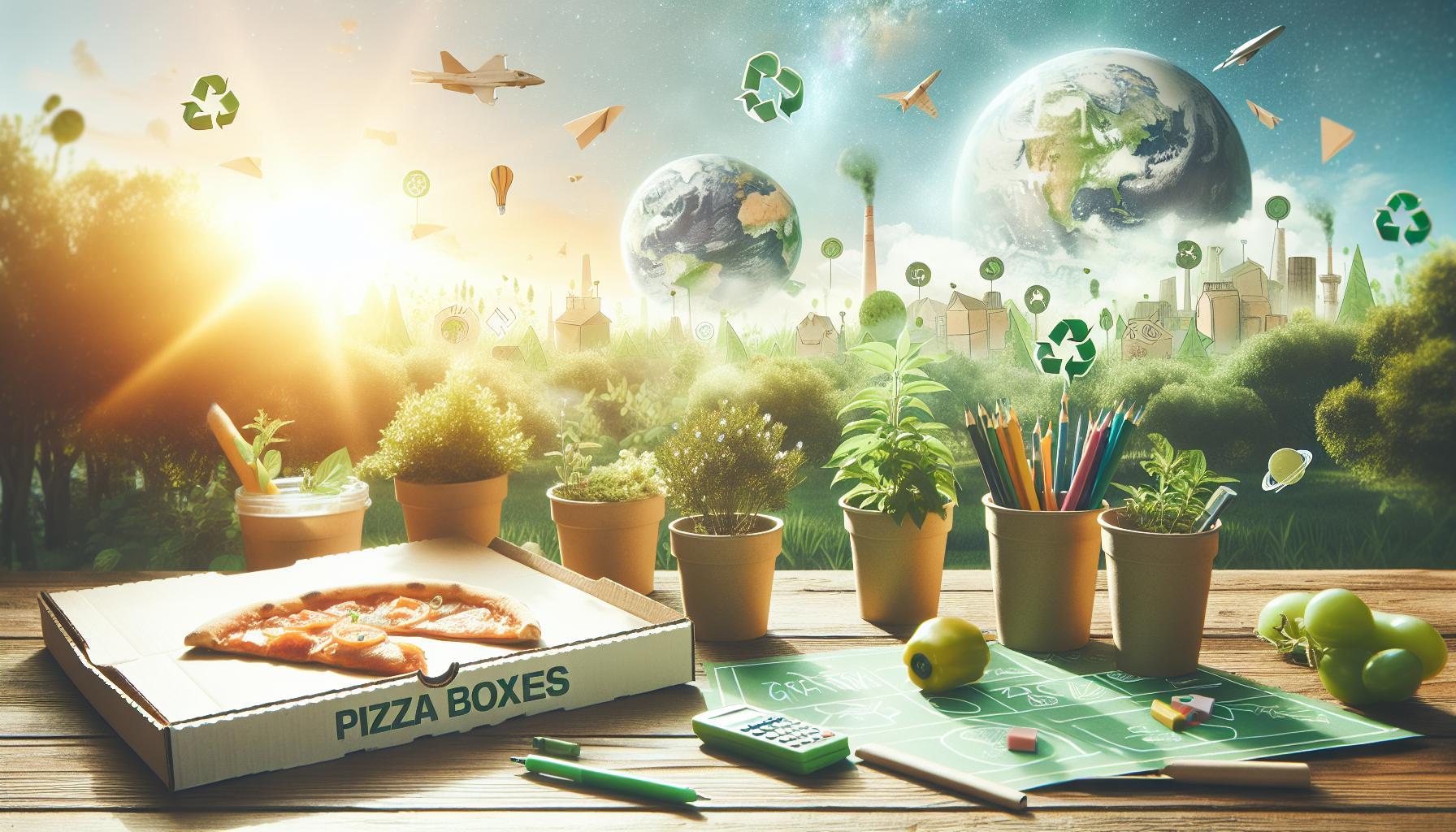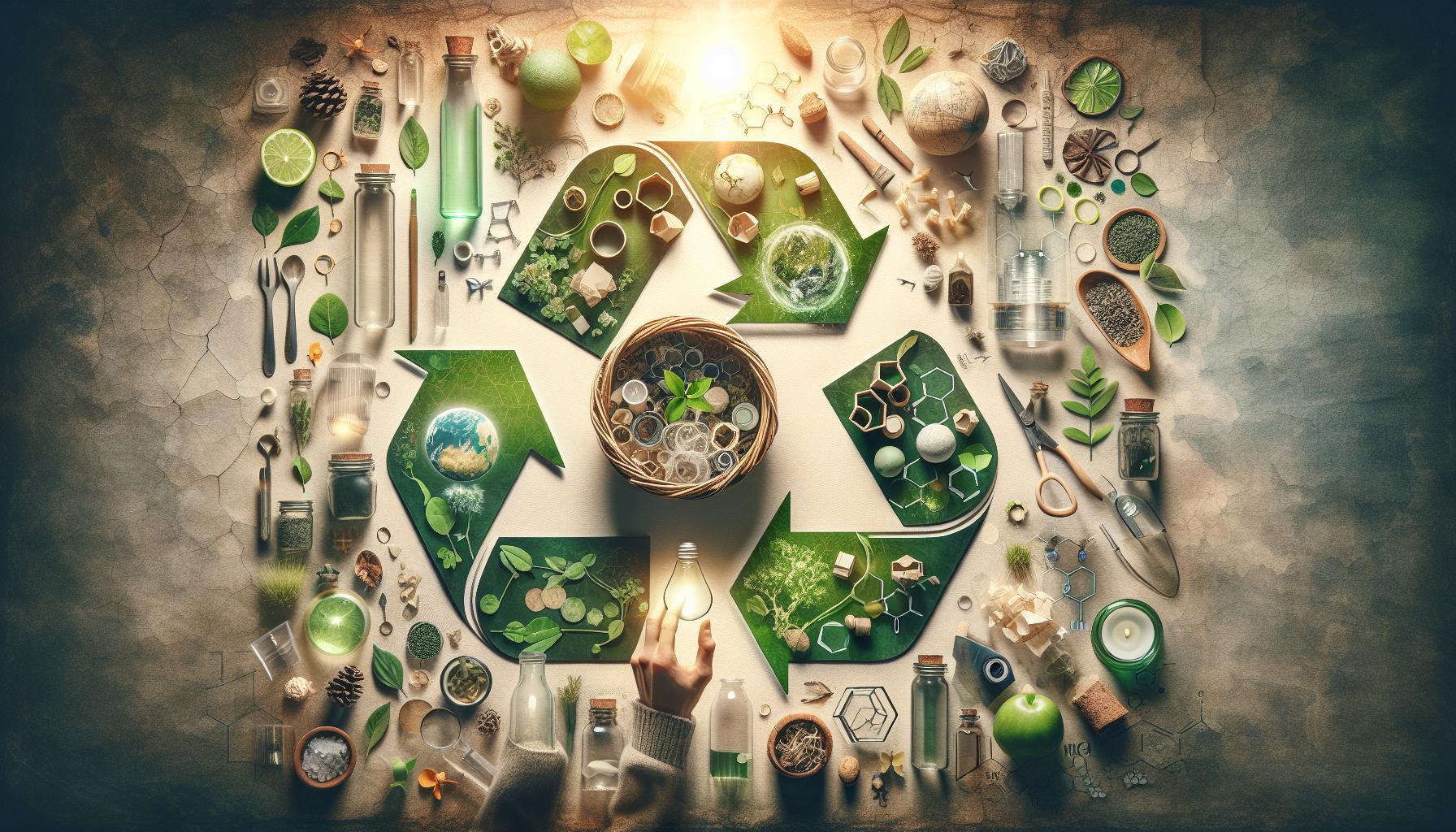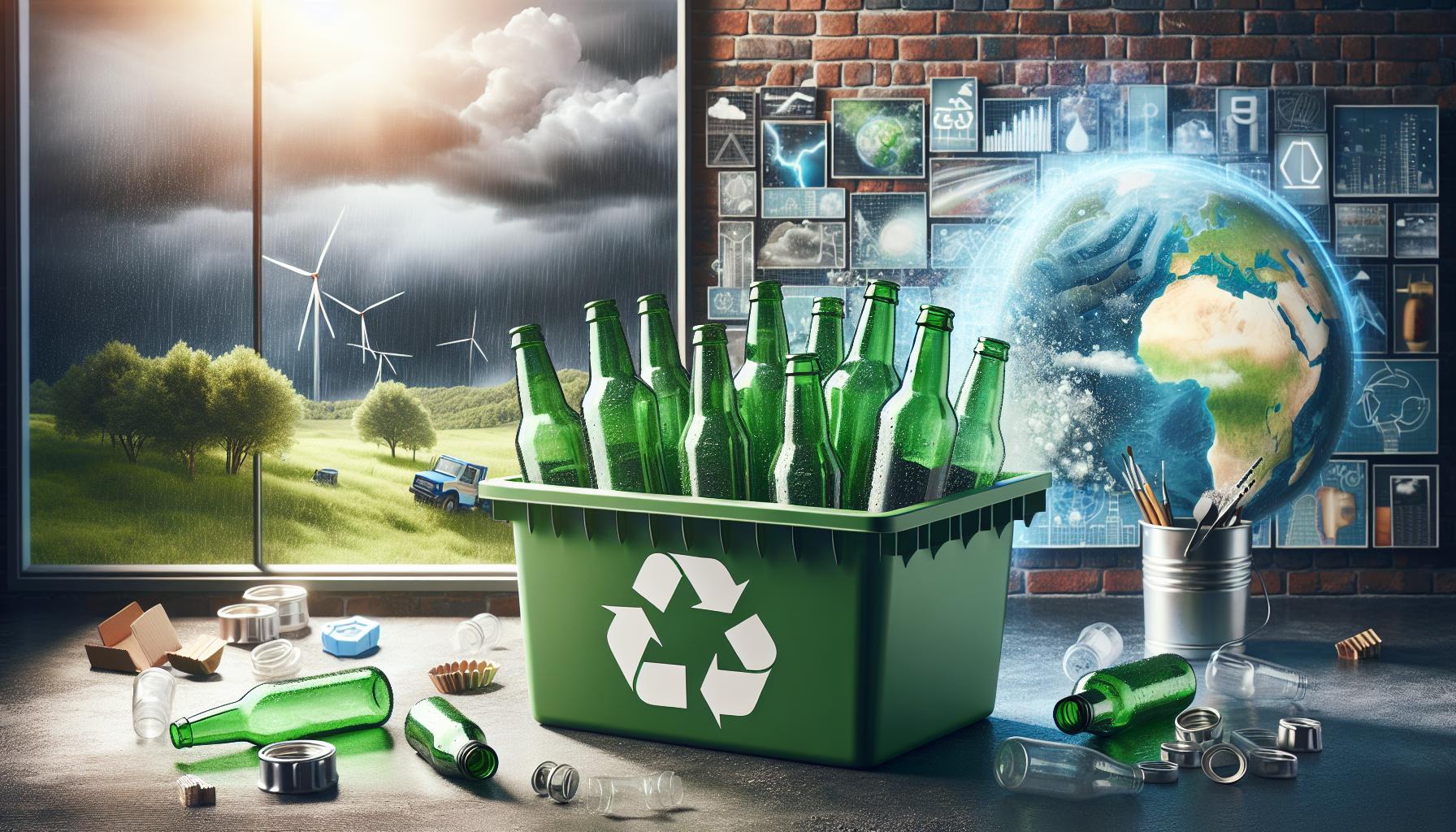Did you know that approximately 1 billion pizza boxes are used in the United States each year? As you enjoy your favorite slice, you might wonder about the fate of that greasy cardboard once you’re done. Understanding whether pizza boxes can be recycled is essential not only for reducing waste but also for making informed decisions that impact our environment.
Grease stains and food residue can complicate the recycling process, leaving many of us unsure about what to do with that empty box. This uncertainty can lead to a waste of valuable resources and increased pollution. By exploring the rules surrounding recycling pizza boxes, you can contribute to a more sustainable future and help guide others in your community.
Join us as we delve into the intricacies of recycling pizza boxes, discuss the environmental implications of our choices, and discover actionable tips to make a positive impact. Your everyday decisions matter, and together, we can drive change!
Can You Recycle Greasy Pizza Boxes?
Recycling greasy pizza boxes often raises questions and doubts among consumers, primarily due to the presence of food residue that can contaminate recycling processes. The good news is that you can recycle pizza boxes-provided they are clean enough. If the grease and food remnants are minimal, many recycling facilities accept these boxes. However, any parts significantly stained with grease should be diverted to landfills, as contamination can spoil entire loads of recyclable materials.
To better understand the recycling of greasy pizza boxes, we should first consider how recycling facilities process these materials. Cardboard recycling relies on the ability to separate fiber from contaminants. Grease and food can hinder this process, leading to reduced quality of the recycled product. Therefore, you can improve the odds of your pizza box being recycled by ensuring that only the clean sections make it to the recycling bin.
Here are a few practical tips to optimize your pizza box recycling efforts:
- Assess Condition: Before recycling, check for grease spots. If the bottom of the box is greasy while the top is clean, remove or tear off the greasy section.
- Recycle Clean Parts: Only place the clean parts of the pizza box in the recycling bin.
- Check Local Guidelines: Recycling standards can vary by location, so consult your local waste management for specific rules regarding pizza box recycling.
By taking these steps, you not only contribute to better recycling practices but also take part in a larger movement towards sustainability. Sharing knowledge about proper disposal methods can inspire friends and family to adopt eco-friendlier habits, leading to a collective impact on reducing waste and promoting recycling initiatives in your community.
Understanding Grease and Its Impact on Recycling

Understanding the role of grease in the context of recycling is crucial for anyone looking to properly dispose of pizza boxes. Many people may not realize that grease does more than just stain your clothing or leave its mark on a cardboard container. Its presence directly impacts the recycling process by introducing contaminants that can disrupt facility operations, potentially leading to entire batches of materials being discarded.
The primary challenge that grease presents is its ability to coat the fibers in cardboard. When cardboard is recycled, the goal is to separate the paper fibers for reuse while eliminating any foreign substances, including food residues like grease. Recyclables are often mixed with water in large pulping machines, where fibers are meant to be broken down and cleaned. However, grease can prevent this from happening effectively. It clogs the machinery and compromises the quality of the recycled material. As a result, facilities might consider a whole load unfit for recycling if even a small amount of contamination is detected.
To better navigate this issue, consider the following points when dealing with pizza boxes:
- Targeted Cleaning: Before tossing your pizza box in the recycling bin, determine which parts are clean. If the top is free from food residue, it can usually be recycled, while greasy sections should be composted or placed in the trash.
- Composting as an Option: For those who are environmentally conscious, particularly greasy sections can often be composted instead of discarded, allowing the organic matter to contribute positively to soil health.
When evaluating how much grease is acceptable for recycling, it’s essential to check local guidelines, as specifications can vary. Becoming informed not only aids in improving your recycling habits but also helps maintain the integrity of the recycling process itself, benefiting the community and the planet. Each small effort can combine toward a greater momentum in reducing waste, illustrating how individual actions contribute to broader environmental solutions. By understanding the impact of grease on recycling, you’re empowered to make choices that favor sustainability.
The Science Behind Cardboard Recycling
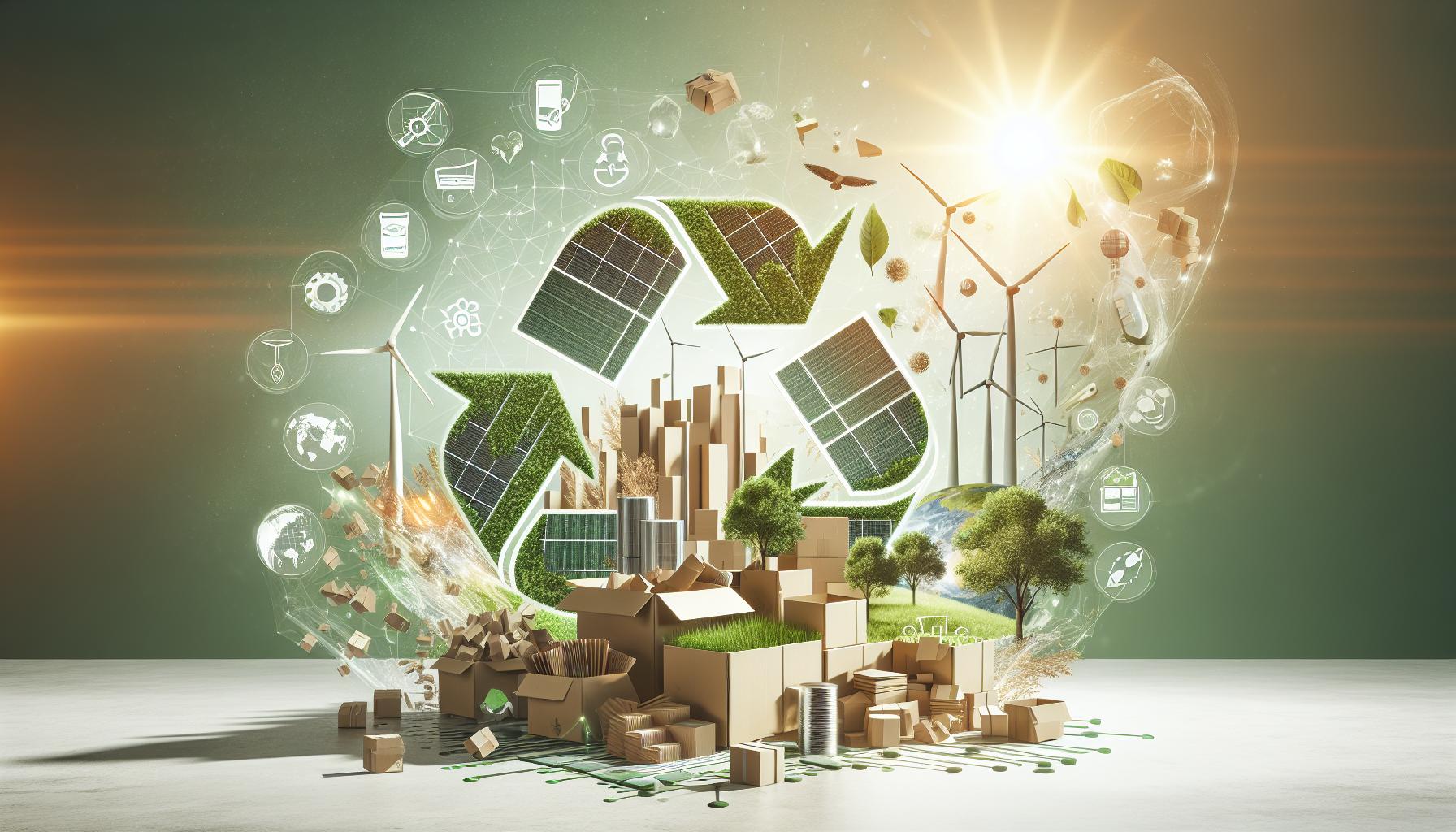
Recycling cardboard might seem like a straightforward process, but the science behind it reveals a complex interplay of materials, methods, and potential challenges. In the case of pizza boxes, the recycling journey begins long before the box reaches the curb. To fully grasp this process, it’s essential to understand how cardboard is made, recycled, and why certain contaminants, like grease, can pose significant hurdles.
Cardboard is primarily composed of cellulose fibers derived from trees. These fibers are processed and compressed to create the sturdy material we rely on for packaging and shipping. When cardboard is recycled, the fibers are reactivated through a pulping process. In this stage, the cardboard is mixed with water and chemicals to break it down into a slurry. This creates a mixture that can be manipulated, allowing the fibers to be separated and cleaned. However, the success of this process heavily depends on the initial condition of the cardboard being prepped for recycling.
When it comes to pizza boxes, grease and food residues can wreak havoc on this delicate balance. The presence of fats and oils not only affects the integrity of the fibers themselves but can also lead to contamination of other recycled materials. As the fibers are pulped, the grease can create a barrier that prevents proper cleaning, thereby compromising the entire batch. Recycling facilities often rely on quality control measures to determine the suitability of materials for recycling; thus, any pizza box with excessive grease can lead to rejected loads, increasing waste for communities striving to reduce landfill contributions.
- Separation of Components: The recycling process hinges on the separation of clean fibers from contaminants, underscoring the importance of proper disposal practices by consumers.
- Quality Over Quantity: Facilities focus on the quality of the cardboard they receive-clean items contribute measurably to successful recycling efforts, whereas greasy ones can lead to operational inefficiencies.
As consumers, we also play a vital role in this process. Understanding how pizza boxes can impact recycling efforts serves as a reminder of our part in the lifecycle of products. By striving to keep pizza boxes as clean as possible before recycling or opting for composting when necessary, individuals can directly influence the efficacy and sustainability of recycling programs in their communities. In this way, even small actions-like ensuring the box is grease-free-can culminate in significant environmental benefits, fostering a healthier planet for future generations.
Local Recycling Guidelines for Pizza Boxes
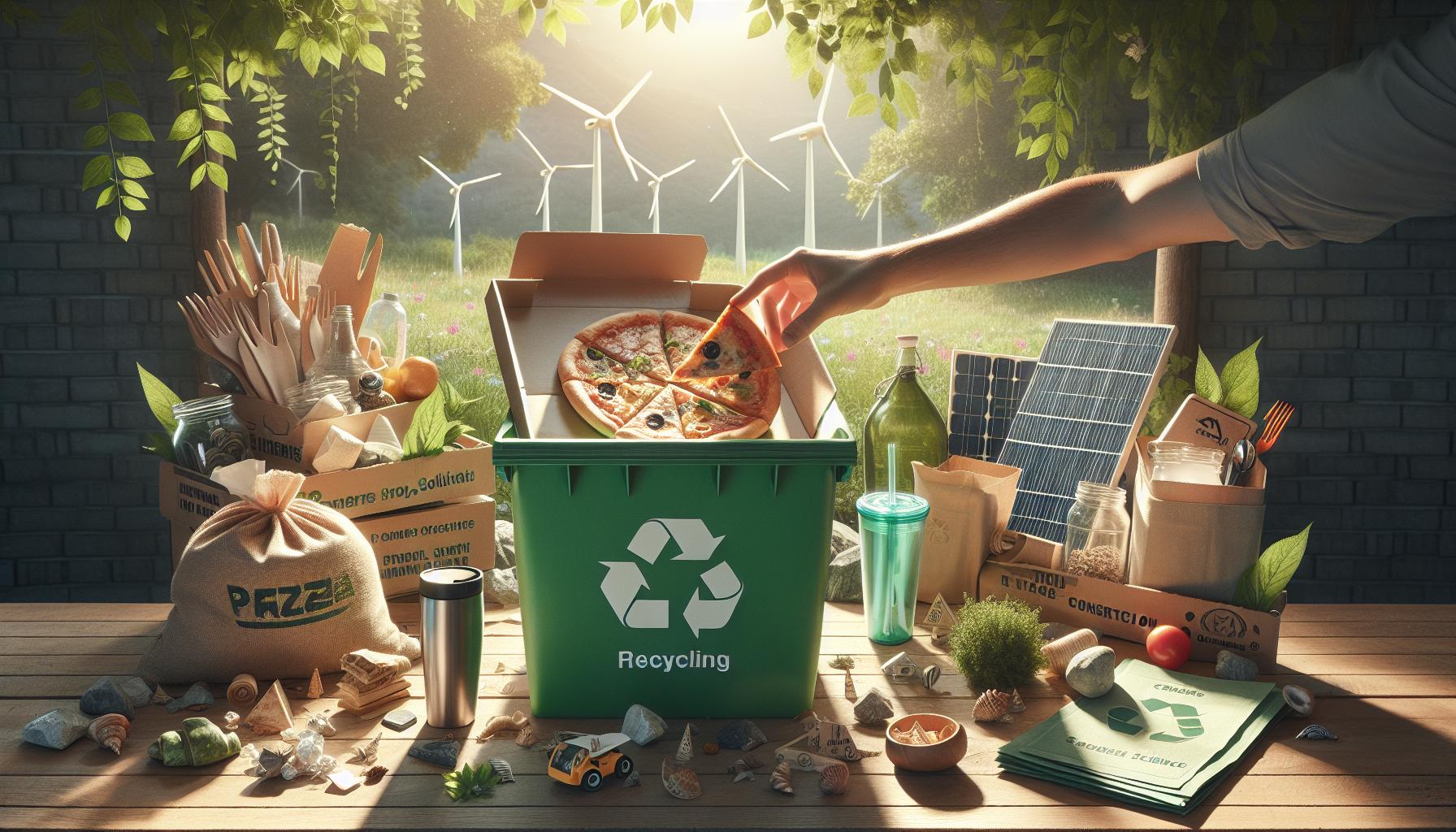
Recycling guidelines can vary significantly from one locality to another, and understanding these differences is crucial for effectively managing waste-especially when it comes to items like pizza boxes that may be tainted with food grease. For many communities, the battle against excess waste begins at the curb, making it vital for residents to know how to properly dispose of their pizza boxes to maximize recycling potential.
Some municipalities have implemented strict rules regarding the acceptability of food-soiled cardboard. A common guideline is that pizza boxes must be free of grease in order to be recycled. In areas with stringent recycling standards, a small amount of grease may be permissible; however, overly soiled boxes are often considered contaminants, leading to rejection during the recycling processing stages. Before tossing that pizza box into the recycling bin, it’s advisable to check your local recycling authority’s rules. Many areas provide detailed insights via online portals, readily available phone inquiries, or community outreach programs that can clarify what’s allowed.
Balancing Recycling and Composting
For those communities where greasy pizza boxes are not accepted in the recycling stream, composting presents an eco-friendly alternative. Because pizza boxes are made of cardboard, which is organic, they can often be composted if they are torn into smaller pieces. This method can help divert waste from landfills while still taking advantage of the materials’ biodegradability. Residents can explore local composting options, such as community compost bins or municipal programs that may accept food waste and soiled cardboard.
Best Practices for Disposal
To help consumers navigate the proper disposal of pizza boxes, here are some best practices:
- Check Local Guidelines: Refer to your municipality’s website or recycling program for specific rules regarding cardboard disposal.
- Minimize Grease: Whenever possible, reduce grease on pizza boxes by removing leftover food and blotting the interior with paper towels before recycling.
- Explore Composting: If recycling isn’t an option, consider composting the pizza box in a home compost setup or a community program.
Through informed actions and by adhering to local recycling guidelines, individuals can play an active role in reducing waste and contributing to a more sustainable waste management system in their communities. Understanding the intricacies of how pizza boxes fit into the recycling spectrum is not only beneficial for the environment but also for the long-term health of our planet.
Eco-Friendly Alternatives to Pizza Boxes
When it comes to enjoying your favorite pizza, the environmentally conscious consumer often faces a dilemma: what to do with the greasy pizza box once the meal is over. While many local recycling guidelines may reject these soiled cardboard containers, there are burgeoning eco-friendly alternatives that not only help minimize waste but also cater to sustainable practices. Innovative packaging solutions and alternatives are emerging, encouraging a more responsible approach to enjoying pizza without adding to landfill waste.
One effective alternative is biodegradable pizza boxes made from sugarcane, palm leaves, or recycled paper. These materials break down more easily than traditional cardboard when discarded and can decompose in compost facilities or appropriate home compost setups. Companies such as World Centric and Eco-Products offer pizza boxes that are not only sustainable but also designed for heat resistance, ensuring that your pizza is kept warm without compromising environmental integrity. Using such options not only reduces waste but also supports businesses committed to eco-friendly practices.
Reusable and Multi-Purpose Containers
Another option for the environmentally conscious consumer is the use of reusable pizza containers. These durable, dishwasher-safe containers can be utilized multiple times, significantly reducing the demand for single-use packaging. There are even companies that offer pizza subscription services with reusable packaging, promoting a closed-loop system where packaging is returned and reused for future orders. This circular approach not only minimizes waste but also fosters a sense of community involvement in sustainability efforts.
Community Initiatives and Local Innovations
Moreover, local restaurants and pizzerias are increasingly recognizing the importance of sustainable packaging. Many establishments now offer discounts for customers who bring their own containers, incentivizing the community to rethink their packaging choices. By collaborating with local schools and organizations, businesses can run programs that educate consumers about the importance of reducing single-use items, including pizza boxes. Engaging the community in these initiatives fosters a collective responsibility towards the environment.
In conclusion, embracing eco-friendly alternatives to traditional pizza boxes is a crucial step in fighting waste and promoting sustainability. Consumers play an essential role in this shift by making informed choices about packaging and advocating for restaurants that prioritize sustainable practices. By being conscious of how we enjoy our pizzas, we can each contribute to a greener future, transforming a simple meal into an opportunity for positive environmental impact.
Tips for Minimizing Grease on Pizza Boxes
Grease stains on pizza boxes can complicate recycling efforts, often leading municipalities to deem them as non-recyclable materials. However, there are several effective strategies to help minimize grease on those pizza containers, making them more suitable for recycling while also reducing environmental impact.
One of the simplest ways to cut down on grease is by using a layer of baking paper or parchment on the bottom of the box before placing your pizza. This creates a barrier between the pizza and the cardboard, significantly reducing the amount of oil and grease that seeps into the box. Additionally, consider opting for thicker, crustier pizzas which are less likely to leak grease compared to their thinner counterparts.
Another useful tip is knowing the right moment for storage. If you can, allow the pizza to cool slightly before placing it back in the box. Hot pizza releases steam, which can condense and create moisture inside the box, leading to more grease absorption. Always ensure that the pizza is set on a plate or tray rather than directly in the box when serving, as this further limits the risk of contamination.
Smart Reheating Techniques
When reheating leftover pizza, it’s helpful to use a skillet or an oven instead of a microwave, which often leads to sogginess. Using a skillet on medium heat can crisp up the underbelly of the pizza while keeping the box clean. If reheating in your oven, place the pizza directly on an oven-safe dish to avoid further grease transfer to the box.
Implementing these practices can be beneficial not only to your recycling habits but also in reducing food waste and enhancing your pizza experience. As you strive to be more eco-conscious, these small changes can make a significant difference in overall waste management efforts, reflecting a proactive approach to sustainability that can inspire those around you.
By being mindful of how we handle our pizza, we position ourselves to make a positive impact on the environment while still enjoying our favorite meals. Every effort counts, and fostering a community ethos focused on sustainability can drive a collective shift toward greener practices.
Best Practices for Recycling Cardboard Materials
Every year, millions of tons of cardboard make their way into recycling systems, but not all of it is accepted. To optimize recycling efforts and embrace sustainable practices, it’s crucial to follow best practices for cardboard recycling, especially when dealing with materials like pizza boxes, which often carry pesky grease stains. By understanding how to properly prepare and sort cardboard, individuals can help ensure these materials are effectively recycled and contribute to a more circular economy.
Firstly, cleanliness is key when recycling cardboard. While some grease is often unavoidable with pizza packaging, reducing contamination is vital. It’s recommended to remove any food residue before recycling. If a pizza box has only minor grease stains, it may still be recyclable in many areas, but boxes that are saturated with grease or have extensive food residue should be composted or disposed of in the trash. Always check with local recycling guidelines to determine the appropriate procedure in your area.
Preparation Steps for Cardboard Recycling
To make your pizza boxes and other cardboard materials more recyclable, adhere to these preparation steps:
- Flatten Boxes: Always flatten cardboard boxes to save space in recycling bins and ensure they fit into collection equipment.
- Remove Non-Cardboard Components: Take off any plastic liners, metal pieces, or labels that are not recyclable.
- Avoid Mixing Materials: Keep cardboard separate from other recyclables like plastics and metals, as contamination can spoil entire batches.
- Store Properly: If you can’t recycle right away, store boxes in a dry place to prevent moisture, which can hinder the recycling process.
Understanding Local Guidelines
Not all municipalities have the same regulations regarding recycling pizza boxes. Some allow lightly soiled boxes to go into recycling, while others may designate them as trash. It is essential to familiarize yourself with your local recycling guidelines, which are often available through waste management websites or local government offices. By adhering to these guidelines, you can ensure that your recycling efforts are not in vain and contribute positively to waste reduction.
Embracing these best practices not only supports better recycling outcomes but also fosters a culture of responsible waste management. Encouraging friends and family to adopt similar habits can amplify the benefits, creating a community committed to sustainability. Small efforts, when combined, can lead to remarkable results in preserving our planet’s resources.
The Role of Composting in Pizza Box Disposal
Composting presents an innovative solution for disposing of greasy pizza boxes, turning what many consider waste into a valuable resource for enriching soil. When pizza boxes are contaminated with food residues, their recycling potential diminishes due to the challenges that grease poses in the recycling process. However, composting offers a sustainable alternative that not only alleviates waste management issues but also enhances the health of garden soils.
Grease-stained cardboard is biodegradable, meaning it can break down naturally over time. When added to a compost pile, pizza boxes can contribute carbon-rich material, essential for healthy compost. The key is to ensure that any residual food, particularly dairy and meat products, is minimized before adding the boxes to the compost. Here are some practical steps for composting pizza boxes effectively:
- Remove Excess Grease: If possible, scrape off any visible cheese or toppings before recycling or composting, even though small amounts of grease won’t harm the compost.
- Shred for Quick Breakdown: Cutting the pizza boxes into smaller pieces can accelerate decomposing, allowing microorganisms to work their magic more efficiently.
- Mix with Other Materials: Combine pizza boxes with nitrogen-rich materials (like fruit scraps or grass clippings) to create a balanced compost environment that facilitates optimal breakdown.
Moreover, utilizing composting as a method for disposing of grease-stained pizza boxes aligns well with community composting initiatives that many municipalities support. These programs not only process compostable materials on a larger scale but also promote awareness about sustainable practices. Engaging with local food co-ops or community gardens can amplify these efforts, as they often seek organic matter to enrich their soils.
Adopting composting not only helps reduce landfill waste but also transforms discarded pizza boxes into nutrient-rich compost that can nourish gardens and support local ecosystems. By choosing this path, individuals can actively participate in reducing reliance on landfills while simultaneously enriching their gardens, promoting a circular economy.
Common Myths About Recycling Food-Contaminated Cardboard
Many people hesitate to toss their greasy pizza boxes into the recycling bin, often believing that any food contamination will render them unsuitable for recycling. This misconception can lead to unnecessary waste when in reality, the recycling process can accommodate certain levels of grease and food residues if handled correctly. Understanding the common myths surrounding the recycling of food-contaminated cardboard is essential for making informed decisions that benefit both the environment and local waste management systems.
Myth #1: All Pizza Boxes Are Non-Recyclable
A prevalent belief is that no food-contaminated cardboard can be recycled. While it is true that excessive grease or residue significantly complicates the recycling process, many recycling facilities do accept pizza boxes that have minor grease stains. The key is to know your local guidelines, as recycling capabilities can vary by region. Some facilities are equipped to handle minor contamination, while others may require the boxes to be free of any food remnants. Always check local recycling rules to understand what’s permissible.
Myth #2: Greasy Cardboard Ruins Recycling Equipment
Another common concern is that greasy pizza boxes will damage recycling machinery. While it’s true that large quantities of grease can create clogs or impede processing, most recycling plants can handle the amounts typically found on a pizza box. In fact, if managed well, the recycled pulp created from these boxes can still be used in the production of new cardboard materials. Effective sorting and cleaning techniques employed by recycling facilities mitigate potential issues, allowing them to process mixed materials more efficiently.
Myth #3: Composting Isn’t an Option for Pizza Boxes
Many individuals overlook the option of composting pizza boxes due to a lack of awareness. Some may assume that the grease renders them unsuitable for a compost pile. Contrary to this notion, pizza boxes can indeed contribute valuable carbon material to compost systems. If you minimize large food scraps and grease, they can break down effectively alongside other compostable items. Engaging with local composting initiatives can also provide additional avenues for productive waste disposal.
Transforming Misconceptions into Action
Educating ourselves and others about the truth behind recycling pizza boxes can have a significant impact on reducing landfill waste. By actively participating in community recycling and composting programs, individuals can help foster a culture of sustainability. Additionally, reaching out to local waste management authorities or neighbors to share accurate information can bolster communal efforts towards environmentally friendly practices.
Incorporating these insights into your daily habits is a step toward not only managing waste effectively but also nurturing a more sustainable environment for future generations. Each small action, informed by dispelling myths, contributes to a larger movement toward responsible consumption and waste management.
Innovative Recycling Solutions for Food Waste
Waste management is evolving rapidly, particularly in the realm of food waste and contaminated materials like greasy pizza boxes. The innovative recycling solutions that communities and businesses are developing not only address environmental concerns but also transform how we think about food packaging and its lifecycle. These advancements not only target contamination issues but also enhance the overall recycling process to minimize landfill contributions.
One significant approach in managing contaminated cardboard is the development of advanced sorting technologies, such as optical sorters and AI-driven systems. These technologies can accurately identify and separate pizza boxes with minor grease stains from uncontaminated recyclables. By optimizing the sorting process, recycling facilities can divert more materials from landfills and convert them into high-quality pulp for new products. This improved efficiency ensures that even slightly soiled items can find a second life, thus reducing waste while promoting a circular economy.
Community-Initiated Solutions
Beyond technological advancements, grassroots initiatives are flourishing across various regions. Many local communities have recognized the potential of establishing dedicated composting programs that can accept contaminated materials, including pizza boxes. For example, in cities like Seattle and San Francisco, food waste collection services are expanding to include pizza boxes, effectively diverting significant amounts of waste from landfills. These programs often educate residents on what can be composted, tackling the misconception that greasy cardboard is unusable.
Furthermore, businesses are starting to adopt environmentally responsible practices by using packaging that is specifically designed for recyclability without compromising functionality. For instance, some pizza chains are experimenting with treated cardboard that reduces grease absorption, making it easier for consumers to recycle their boxes. By investing in these sustainable packaging innovations, companies can play a pivotal role in minimizing food waste and promoting recycling initiatives.
Collaboration Across Sectors
The future of recycling pizza boxes and similar materials lies in collaboration. Cross-sector partnerships between local governments, waste management companies, and private businesses are key to developing comprehensive recycling solutions. For example, shared resources can lead to community programs that foster awareness and education about proper disposal practices. Additionally, collaborative research initiatives can help refine methods for processing greasy cardboard, potentially revealing more environmentally friendly techniques for recycling.
are paving the way for a more sustainable future. By implementing advanced sorting technologies, fostering community initiatives, and encouraging collaborative efforts, we can transform the way we handle greasy pizza boxes and other contaminated materials. With collective action, individuals and communities can contribute to reducing waste, preserving resources, and creating a healthier planet for generations to come.
The Environmental Benefits of Proper Cardboard Recycling
Proper recycling of cardboard, including the often-debated greasy pizza boxes, plays a vital role in enhancing environmental health. When we recycle cardboard instead of sending it to landfills, it significantly reduces the need for raw materials and cuts greenhouse gas emissions associated with the production of new cardboard. For every ton of cardboard that is recycled, around 1.17 tons of carbon dioxide emissions are avoided, showcasing the impactful benefits of recycling initiatives. This not only aids in conserving forests-vital carbon sinks-but also lessens the energy consumption needed in manufacturing processes.
Furthermore, recycling contributes to a circular economy, where waste is minimized, and materials are continually reused. Implementing effective cardboard recycling programs allows communities to create a sustainable loop, helping to divert countless tons of waste from landfills annually. This is especially crucial with the increasing volume of packaging waste generated by rapid e-commerce and take-out food services. In fact, according to the EPA, recycling and composting prevented the release of 186 million metric tons of carbon dioxide equivalent into the air in 2018, emphasizing that each pizza box recycled contributes to a larger collective goal.
Benefits of Recycling Pizza Boxes
Recycling pizza boxes may seem trivial, but it presents several distinct benefits:
- Resource Conservation: Every recycled box saves trees and water-fiber recycling uses 50% less water than producing new paper from virgin fibers.
- Reduced Landfill Waste: Cardboard makes up a significant portion of landfill material, and recycling helps alleviate that pressure, extending landfill lifespan.
- Job Creation: The recycling industry also creates jobs across various sectors, from collection to processing, thus contributing to local economies.
- Community Engagement: Local recycling programs often inspire community participation, leading to increased environmental awareness and civic responsibility.
By making informed decisions about recycling pizza boxes-even those with some grease-individuals and communities can greatly enhance their environmental footprint. Small, collective actions, such as proper disposal of these materials and supporting local recycling initiatives, can lead to substantial improvements in resource preservation, waste management practices, and overall ecological health. It’s a reminder that our choices today have the power to shape a more sustainable future for generations to come.
Frequently Asked Questions
Q: Can you recycle pizza boxes with grease stains?
A: No, you typically cannot recycle pizza boxes that are heavily contaminated with grease or food residue. Most recycling facilities reject greasy cardboard because it can spoil the recycling process. For detailed disposal guidelines, refer to your local recycling rules or consider composting if the box is compostable.
Q: What should I do with a greasy pizza box?
A: For a greasy pizza box, the recommended approach is to check local waste management guidelines. If recycling isn’t an option, dispose of it in the regular trash, or consider cutting off the clean parts for recycling while composting the greasy sections, if allowed.
Q: How can I tell if a pizza box is recyclable?
A: You can tell if a pizza box is recyclable by checking for excessive grease or food remnants. If it has minimal stains and no food left inside, it’s often acceptable for recycling. Always consult your local recycling rules to be sure.
Q: Are there any pizza box recycling programs?
A: Yes, some areas offer specialized pizza box recycling programs, where facilities manage the contamination issues. These programs often involve collection points specifically for greasy cardboard. Check your municipality’s website or contact local recycling centers for availability.
Q: What alternatives are there to recycling pizza boxes?
A: Alternatives to recycling pizza boxes include composting if the box meets compostable material guidelines, or repurposing the clean sections for art projects or storage. Always ensure any use aligns with local waste management practices to minimize environmental impact.
Q: Why can’t all pizza boxes be recycled?
A: Not all pizza boxes can be recycled primarily due to grease and food residue, which compromise the quality of recycled paper. Facilities need clean material to produce new paper products, so contamination renders the boxes unsuitable. Understanding these rules helps in making informed disposal choices.
Q: Can you compost pizza boxes instead of recycling them?
A: Yes, you can compost pizza boxes that are free from excessive grease and food waste. Only compost the clean portions and avoid adding those that have heavy contamination. Always verify if your local composting program accepts such materials to ensure proper waste management.
Q: How do I dispose of pizza boxes responsibly?
A: To dispose of pizza boxes responsibly, first check for grease contamination. If the box is clean, recycle it; if it’s greasy, either cut off the clean parts for recycling or place the whole box in the trash. Exploring local disposal guidelines can help maximize your environmental contributions.
For further insights on responsible recycling practices and sustainable habits, check our main article on “Can You Recycle Pizza Boxes: Grease-Stained Cardboard Rules.”
To Wrap It Up
As you’ve learned, recycling pizza boxes isn’t as straightforward as it may seem! While grease-stained cardboard can be a challenge, understanding your local recycling guidelines is key. By taking mindful steps, you can contribute to waste reduction and support a more sustainable future. Ready to make a difference? Check your local recycling rules today!
If you found this insight valuable, why not explore related resources? Discover “The Ultimate Guide to Cardboard Recycling” and see how you can optimize your recycling habits at home. You can also check out “Eco-Friendly Pizza Choices” to support sustainable dining next time you order in. Don’t forget to join our newsletter for more tips on sustainable living delivered straight to your inbox!
Your actions matter, and every small step counts. Share your thoughts or questions in the comments below-we’d love to hear from you! Together, we can make informed choices that benefit our planet while enjoying our favorite foods responsibly.

